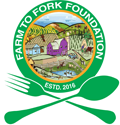Effect of Different Substrates on Phenotype, Nutritional, Phytochemical Composition and Antioxidant Activity of Pleurotus pulmonarius
DOI:
https://doi.org/10.5455/faa.226318Abstract
Mushrooms have been an important food to man for millennia. Several species of Pleurotus have been cultivated successfully on different substrates including palm bunch, sawdust and corn cob. Pleurotus pulmonarius has also been cultivated but there is a gap in knowledge as to this effect. The sole aim of this study is to bridge the gap in knowledge as to the effect of different substrates on the phenotypic, nutritional, phytochemical and antioxidant activity of P. pulmonarius. Sawdust, palm bunches, corn cobs and P. pulmonarius were obtained from NIHORT in Imo and Ibadan respectively. Composting, spawn inoculation and incubation were carried out to culture the mushroom. Data analysis was done with GraphPad Prism 5. Proximate, phytochemical and antioxidant activity of the mushroom was conducted at IITA, Ibadan. Palm bunch produced the greatest number of fruiting bodies (36.00±15.50), making it the substrate yielding fruit with the highest fruit weight (216.00±62.92). Protein and moisture content was higher on palm bunch (25.61±0.11, 4.09±0.01 respectively), while carbohydrate was higher on sawdust (62.85±0.09). Mineral composition varied with the highest value observed for potassium on sawdust and Palm bunch (3.93±0.01, 3.90±0.03), there is therefore no significant difference at (p≤0.05). P. pulmonarius has low phytochemical composition, but its free radical scavenging ability against DPPH free radicals was high (73.57±0.27, on palm bunch and 28.22±0.39 on sawdust). ABTS* scavenging ability was the highest in palm bunch (38.45±0.25). These varying differences in the composition of Pleurotus pulmonarius grown on palm bunch, sawdust and corn cob ratify the hypothesis that substrates influenced its growth and composition.
Downloads
Downloads
Published
How to Cite
Issue
Section
License
Copyright (c) 2024 By the Author(s)

This work is licensed under a Creative Commons Attribution-NonCommercial 4.0 International License.




















